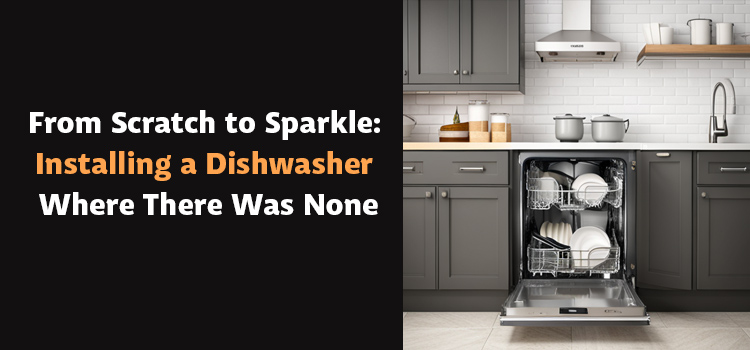As an Amazon Associate, I earn from qualifying purchases
The Ultimate Guide on How to Install a Dishwasher Where There Was None

Installing a dishwasher in a kitchen that has never had one might seem like a daunting task. However, with the right tools, a bit of planning, and a step-by-step approach, it’s a project many homeowners can tackle over a weekend. This comprehensive guide will walk you through the entire process, from choosing the right dishwasher to integrating it seamlessly into your kitchen space.
Planning and Preparation
Assessing Your Space and Requirements
Before you rush out and purchase a dishwasher, it’s crucial to evaluate the space where you plan to install it. Measure the dimensions carefully and consider the proximity to water supply and drainage points. Additionally, think about the power supply and ensure you have an electrical outlet nearby or plan for its installation.
Choosing the Right Dishwasher
Selecting the appropriate dishwasher involves more than just fitting it into the available space. Consider the unit’s capacity, energy efficiency, and how its design complements your kitchen’s aesthetic. For those who value cooking with efficiency, incorporating appliances like the best speed oven can complement your new dishwasher, enhancing your kitchen’s functionality.
Installation Process
Step 1: Preparing the Installation Site
If you’re replacing a cabinet with a dishwasher, you’ll need to remove the existing cabinetry and ensure the space is clear of obstacles. It’s also a good time to check the floor’s level and make any necessary adjustments.
Step 2: Water Supply and Drainage
One of the most critical steps is connecting your dishwasher to a water supply and drainage system. If your kitchen was not previously equipped with a dishwasher, you might need to install new plumbing. This involves tapping into the existing water supply lines and creating a drain connection under the kitchen sink.
Step 3: Electrical Connections
Safety first—ensure the power supply to the kitchen is turned off before starting work on the electrical connections. Most dishwashers need a 120V, 60 Hz, and grounded electrical supply. You may also want to consult an electrician to ensure compliance with local building codes.
Step 4: Installing the Dishwasher
With the prep work done, you can now slide the dishwasher into place, making sure it’s level and securely fastened. Connect it to the water supply, drain, and power, then run a test cycle to check for leaks or issues.
Customizing Your Kitchen Space
With your dishwasher installed, consider how to further customize your kitchen to suit your culinary adventures. A best convection oven for sublimation could be your next addition, especially if you enjoy baking or crafting. Similarly, pizza lovers might look into the best commercial pizza oven to bring a slice of Italy into their homes.
Final Touches and Maintenance
Ensuring Proper Use
Now that your dishwasher is installed, familiarize yourself with its features and maintenance requirements. Regular cleaning and descaling will prolong its life and ensure it continues to run efficiently.
Conclusion
Installing a dishwasher where there was none opens up a world of convenience and efficiency in your kitchen. By following these steps, you can enjoy the benefits of modern kitchen technology, even in older homes. Remember, whether you’re upgrading your kitchen with a dishwasher, a speed oven, or a commercial pizza oven, it’s all about making your space work for you.
Remember to consult professional help if you encounter any challenges during the installation process. With a bit of effort and the right tools, your kitchen will soon boast a fully functional dishwasher, ready to take on the challenge of dirty dishes and make your culinary space more efficient and enjoyable.
As an Amazon Associate, I earn from qualifying purchases
